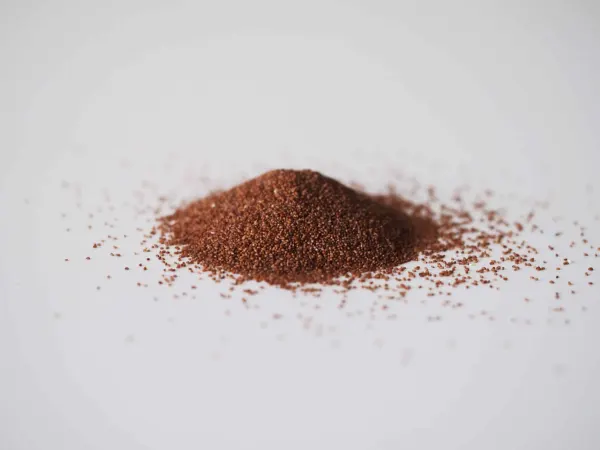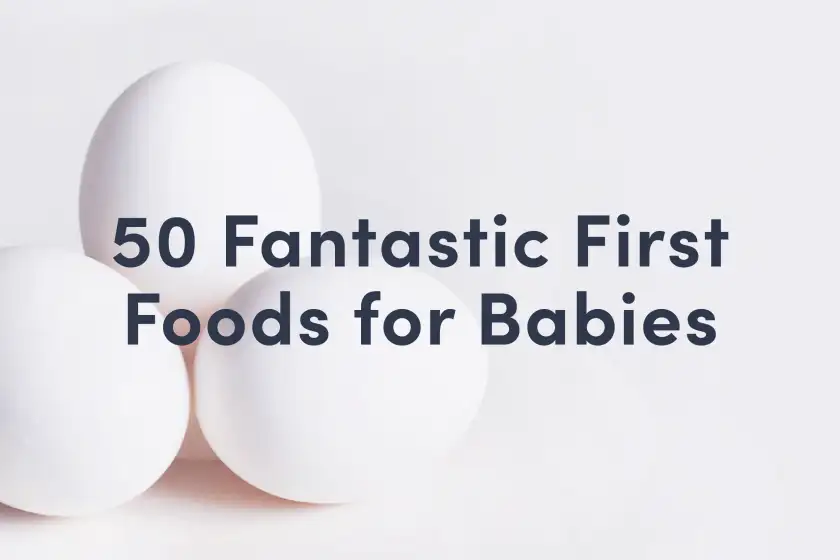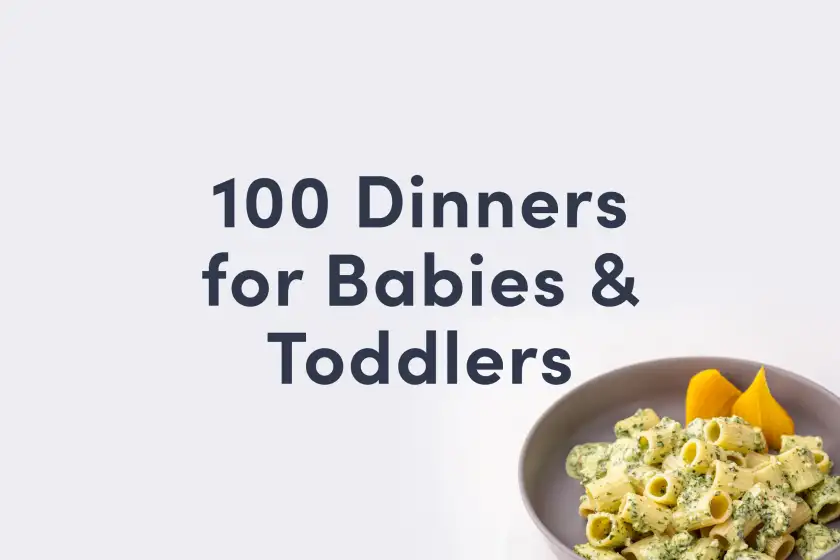Teff
Grain
Age Suggestion
6 months
Iron-Rich
Yes
Common Allergen
No

When can babies eat teff?
Teff may be introduced as soon as baby is ready to start solids, which is generally around 6 months of age. Teff is a gluten-free grain that can be offered to those with celiac disease and/or non-celiac gluten sensitivity.
Where does teff come from?
Humans learned to grow and harvest the world’s smallest grain thousands of years ago in the Horn of Africa, where teff originated. Over time, teff’s cultivation led to new varieties with black, brown, cream, or red hues and subtle variations in taste, from malty to nutty to slightly sweet. Farmers in the plant’s native region continue to produce most of the world’s supply, though new growers in Asia, Australia, and North America are helping to meet the increasing demand for the gluten-free grain. Like fonio and millet, teff contains more iron and protein than wheat and is versatile in the kitchen. Teff is often ground into flour to make injera, a spongy sourdough bread eaten with tibs (stir fry) or wat (stew) in Eritrea and Ethiopia, where the grain continues to be a staple food.
Videos
Is teff healthy for babies?
Yes. This grain is a great source of energy from carbohydrates and a good source of protein, containing all essential amino acids. Teff also has noteworthy amounts of zinc, iron, B vitamins including folate and, unlike many grains, even contains some calcium. Additionally, teff offers a wide range of plant nutrients, particularly polyphenols, which play a protective role in the body. For gluten-free families, teff is an excellent, nutrient-dense grain and flour option. Teff flour is typically whole-grain, and as nutritionally dense as the grain itself.
Teff does contain phytates, which can reduce the body’s ability to absorb nutrients from the food. Many of these plant compounds break down during the cooking process and are mostly harmless in healthy people when consumed as part of a balanced diet. Fermenting teff (as in the process of making the traditional food, injera) helps reduce phytates and improves nutrient absorption and digestion.
★Tip: Store teff flour in the refrigerator or freezer to keep it fresh longer. Teff grains may be stored like other whole grains—in a sealed container away from heat and light.
Can babies eat injera?
Yes. Injera, a fermented bread made from teff flour, is a traditional food with origins in Eritrea and Ethiopia and is very nutritious for babies. For babies just starting solids, try rolling a large piece of injera into a stick shape that is easier for baby to hold and let them munch on the end. For older babies and toddlers, cut or tear injera into bite-sized pieces, or continue to offer a large piece and encourage the child to take bites.
Is teff a common choking hazard for babies?
No. Teff is not a common choking hazard, though in theory an individual can choke on any food. As always, make sure you create a safe eating environment and stay within an arm’s reach of baby during meals. For more information on choking, visit our sections on gagging and choking and familiarize yourself with the list of common choking hazards.
Is teff a common allergen?
No. Teff is not a common allergen, although allergies to teff have been reported.
Fortunately, since teff is wheat- and gluten-free, it is appropriate for individuals with wheat allergies, celiac disease, and non-celiac gluten sensitivity to consume.
As with all new foods, introduce teff in small amounts and watch closely as baby eats to see if any adverse reaction occurs. If all goes well, gradually increase the serving size over time.
Recommended Guide: Introducing Allergens
Can teff help babies poop?
Yes. Teff is an excellent source of fiber, particularly insoluble fibers (which help bulk up bowel movements) and polyphenols. Together, these qualities contribute to overall digestive health and bowel regularity. Note that pooping patterns can vary significantly from child to child. Be sure to talk to your pediatric healthcare provider if you have concerns about baby’s pooping and digestive function.
What are recipe ideas for cooking with teff?
Teff works well in most recipes that call for grains. Swap corn for teff to make grits, polenta, or pone. Use teff in place of barley to thicken soups and stews. Skip the wheat and opt for teff to bind bean burgers, fish cakes, and meatballs. Mix teff with onion, garlic, and spices to make a base for a grain bowl or a stuffing for bell peppers, portobello mushrooms, or tomatoes. Experiment with teff flour in your baked goods, dumplings, and homemade pasta. If you’d prefer to follow tradition, look for inspiration in Ethiopian and Eritrean cooking. Try it in recipes like genfo, a sticky porridge served with berbere spice and butter, or injera, the famous spongy sourdough bread.
How do you prepare teff for babies with baby-led weaning?
Every baby develops on their own timeline, and the suggestions on how to cut or prepare particular foods are generalizations for a broad audience.
6 to 9 months old:
Make teff porridge and serve it two ways: cooled and sticky so you can roll it into a ball for baby to grab (cooking with coconut milk or other milks will help it stick more—see recipe), and in a bowl for baby to scoop with their hands. Alternatively, pre-load a spoon with teff porridge and pass it in the air for baby to grab. You can also use teff flour as a binder in oatmeal balls, fritters, meatballs, and patties—or as the base for baked goods like injera bread or pancakes. If serving injera at this age, try rolling a large piece of it into a stick shape that will be easier for baby to hold and munch on.
9 to 12 months old:
At this age, babies develop the pincer grasp (where the thumb and forefinger meet), which enables them to pick up smaller pieces of food. Use teff to make fritters, injera, pancakes, or patties, and break the food into bite-sized pieces before serving. Of course, you may continue offering teff porridge.
12 to 24 months old:
Use teff as the base for sauces, stews, and stir-fries. Or make injera or another teff-based bread or pancake and show the child how to dip it into the sauce or stew and take a bite. Eat some alongside the child to model how it’s done!
For more information on the most important nutrients for babies, see our Nutrient Cheat Sheet for Babies.
Written and reviewed by these specialists
J. Truppi, MSN, CNS. Certified Nutrition Specialist®
V. Kalami, MNSP, RD, CSP. Board-Certified Pediatric Dietitian & Nutritionist.
K. Grenawitzke, OTD, OTR/L, SCFES, IBCLC, CNT. Pediatric Feeding Therapist.
S. Bajowala, MD, FAAAAI. Board-Certified Allergist & Immunologist (allergy section)
R. Ruiz, MD, FAAP. Board-Certified General Pediatrician & Pediatric Gastroenterologist
Expert Tips Delivered to Your Inbox
Sign up for weekly tips, recipes and more!
The content offered on SolidStarts.com is for informational purposes only. Solidstarts is not engaged in rendering professional advice, whether medical or otherwise, to individual users or their children or families. No content on this site, regardless of date, should ever be used as a substitute for direct medical advice from your doctor or your medical or health professional, nutritionist, or expert in pediatric feeding and eating. By accessing the content on SolidStarts.com, you acknowledge and agree that you are accepting the responsibility for your child’s health and well-being. In return for providing you with an array of content “baby-led weaning” information, you waive any claims that you or your child may have as a result of utilizing the content on SolidStarts.com.







